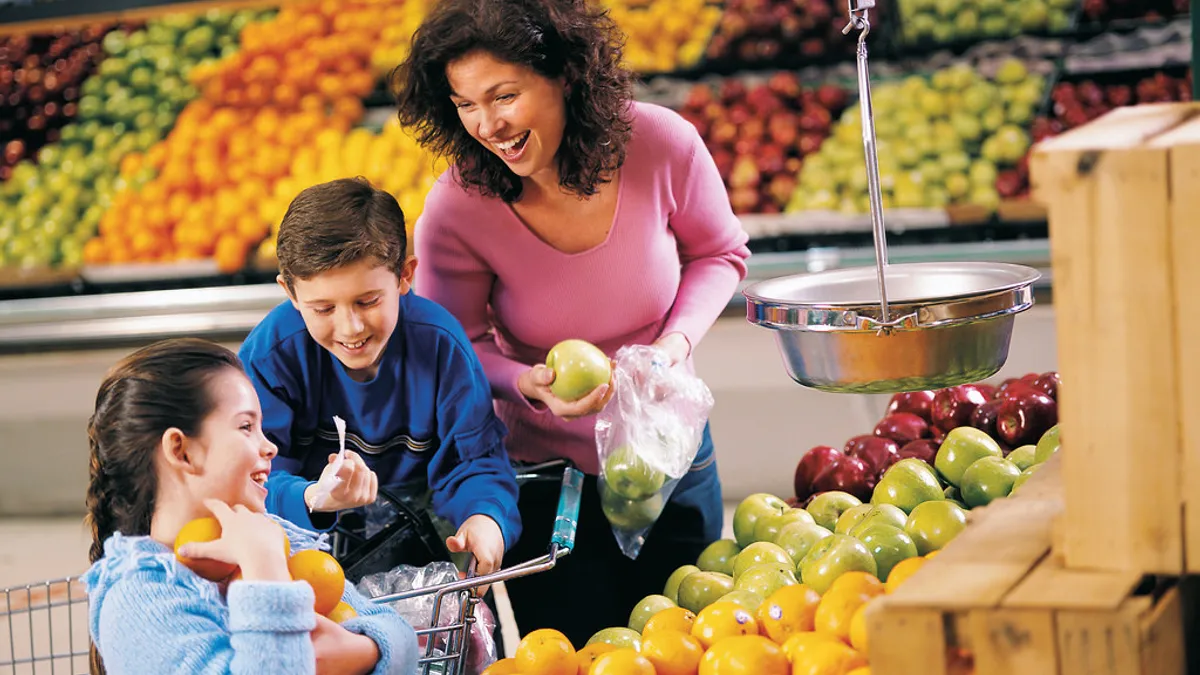Dive Brief:
- According to a new report from The Hartman Group, grocery shopping is seen as enjoyable by many consumers. This is good news for brick-and-mortar stores in some respects. However, as shopping and consumers evolve, retailers need to make investments to keep that love strong.
- “Providing food for the household is an expression of love, care and nurturance for self and others,” Laurie Demeritt, CEO of The Hartman Group, said in a statement. “It is because of this that for many consumers, shopping for groceries is something much more than a chore — it is an act of love.”
- The group's research finds that brick-and-mortar grocery remains the most used channel, with 86% of consumers having shopped in-store in the last 30 days. Still, online grocery is poised for growth, particularly among younger consumers and parents.
Dive Insight:
In its study, The Hartman Group states that “there may be one barrier insurmountable to online food retailing: the emotional connection to in-store shopping.” And brick-and-mortar grocery stores can certainly offer a host of benefits not available via online alternatives. Physical supermarkets boast an array of fresh produce that customers can touch, weigh and interact with, as well as eye-catching displays and endcaps that encourage impulse purchases — factors that are either difficult or impossible to replicate online.
A recent Retail Feedback Group study found that ease of use, convenience and time-saving aspects may be tipping the scales in favor of grocery shopping online versus in-store, but physical store shopping still wins on product quality and freshness — particularly important factors when buying fruits and vegetables.
“It’s still difficult to get online the smell, the taste … I think that’s important for a lot of customers at the end of the day,” Ahold Delhaize CEO Dick Boer told Food Dive. “There is also the relationship and the store and the people — don't forget that. How do you get community engagement online? You can’t.”
Selection and customer service, in addition to other soft factors like making the customer feel valued, are vital in the physical retailing world. Studies like these give brick-and-mortar stores clear objectives on where they need to invest time, attention and dollars to keep their shoppers from shifting to online competitors.
The convenience of online shopping, along with highly competitive prices, is going to win over some customers and some shopping occasions — but not all of them and not all the time. And certain categories — shelf-stable goods, like nonperishable canned, boxed and bottled goods, and health and beauty — are more conducive to buying online than others. The Food Marketing Institute and Nielsen research projects that 40% of all center-store shopping will come from online shoppers by 2025.
This is exactly why some of the most successful regional grocers like H-E-B, Publix and Wegmans emphasize a host of non-price factors and increasingly focus on perimeter departments. They cater to customers seeking broad and deep selections, localized and specialty assortments, quality fresh and prepared foods, stellar customer service, in-store restaurants and bars, and a host of other qualities hard to get in a single online shopping destination.
Despite forecasts that a good chunk of grocery shopping will move online in the coming years, brick-and-mortar retailers will continue to evolve the in-store experience to remain relevant too. After all, the majority of grocery shopping — 75% — is still projected to happen in stores in 2025, according to FMI and Nielsen research.








